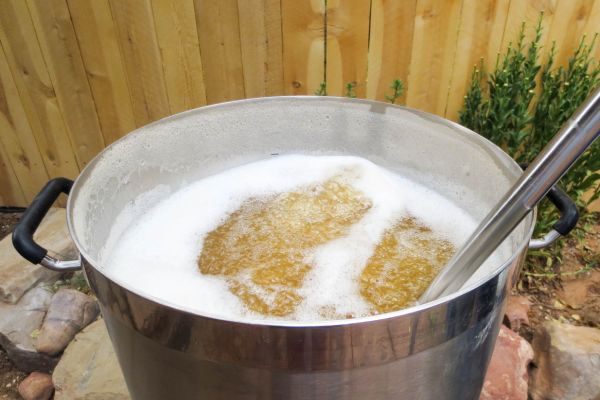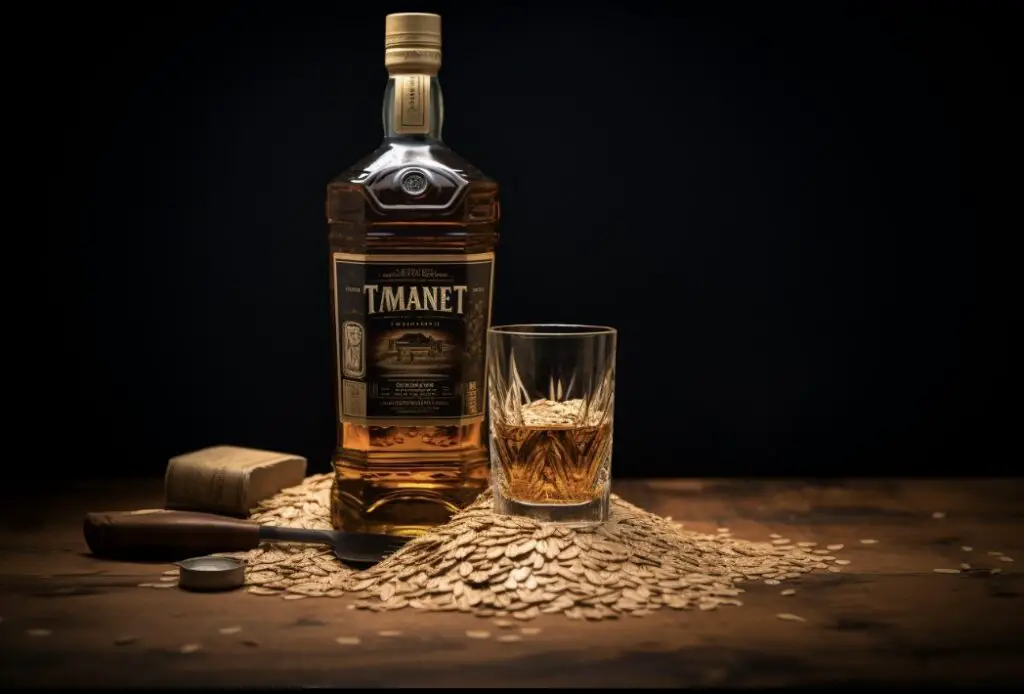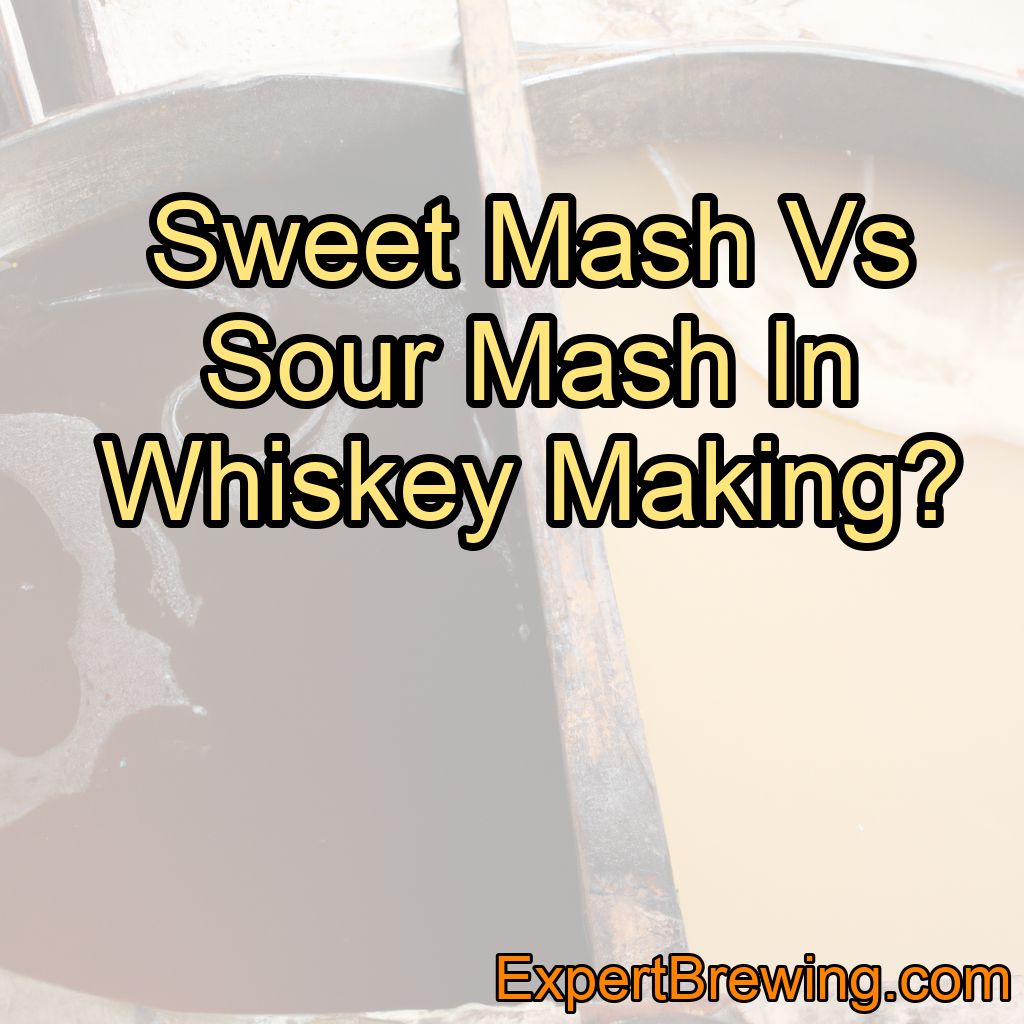Whiskey making is a craft that involves various techniques, processes, and ingredients, each contributing to the final product’s unique flavor, aroma, and character.
One of the most debated topics among whiskey enthusiasts and distillers is the difference between sweet mash and sour mash. Both methods have their merits and drawbacks, but which one is the best for producing quality whiskey?
In this post, we will delve into the sweet mash and sour mash processes, explore their differences, and determine which method is superior in whiskey making.
What is Sweet Mash?
Sweet mash is a process of whiskey making that involves creating a fresh batch of fermented grains to distill into whiskey without using any previously fermented mash.

This method is often associated with a cleaner and lighter flavor profile, as it does not contain any residual bacteria or yeast from previous batches.
How Sweet Mash is Made
The sweet mash process starts by selecting the grains, which typically consist of a mix of malted barley and other grains such as corn, rye, or wheat. These grains are then milled to create a fine, flour-like consistency.

The milled grains are mixed with warm water to create a mash, which is then heated to activate the enzymes in the malted barley. These enzymes convert the starches in the grains into fermentable sugars.
Once the conversion is complete, the mash is cooled to a suitable temperature for fermentation. Yeast is added to the mash, which consumes the sugars and converts them into alcohol and carbon dioxide. The fermentation process typically takes several days, after which the resulting liquid, known as “wash,” is ready for distillation.
What is Sour Mash?
Sour mash is a process of whiskey making that involves using a portion of previously fermented and distilled mash, called “backset,” to kick-start the fermentation process in a new batch of mash. This method is believed to help maintain consistency between batches and contribute to a richer, more complex flavor profile.
How Sour Mash is Made
The sour mash process begins similarly to the sweet mash process, with the selection, milling, and mashing of grains. However, before the yeast is added to the new mash, a portion of backset is mixed in.
The backset is the spent grains and liquid left in the still after the previous batch of whiskey has been distilled.
The addition of backset to the new mash lowers its pH, creating a more acidic environment that is less prone to bacterial contamination. The yeast is then added, and the fermentation process proceeds as it does in the sweet mash method. Once fermentation is complete, the wash is distilled, and the remaining backset is saved to be used in the next batch of sour mash.
Differences Between Sweet Mash and Sour Mash
There are several key differences between sweet mash and sour mash, which affect the overall whiskey-making process and the final product.
Flavor Profile
Sweet mash whiskeys tend to have a lighter, cleaner flavor profile, as they do not contain any residual bacteria or yeast from previous batches. Sour mash whiskeys, on the other hand, are known for their richer, more complex flavors, which are attributed to the presence of backset in the fermentation process.
Consistency Between Batches
Sour mash is often favored by distillers because it helps maintain consistency between batches. The backset introduces a continuous line of bacteria and yeast to each new batch, ensuring that the fermentation process and resulting flavor profile remain consistent. Sweet mash, however, relies entirely on a fresh batch of yeast and grains each time, which can result in variations between batches.
pH Levels and Bacterial Contamination
The addition of backset in the sour mash process lowers the pH of the new mash, creating a more acidic environment.
This acidity inhibits the growth of unwanted bacteria, which can lead to off-flavors and spoilage.
Sweet mash does not benefit from this natural safeguard against contamination, making it more susceptible to bacterial infection.
Distillery Practices
While many large-scale distilleries use the sour mash process exclusively, some smaller craft distilleries are experimenting with sweet mash to produce unique, small-batch whiskeys. These distilleries often use carefully controlled environments and high-quality ingredients to mitigate the risk of bacterial contamination associated with sweet mash.
Personal Experience with Sweet Mash and Sour Mash
As an experienced brewer, I have had the opportunity to work with both sweet mash and sour mash methods in whiskey making.
While I can appreciate the consistency and flavor complexity that sour mash offers, I have also been impressed by the clean, bright flavors that can be achieved with sweet mash.
In my experience, sweet mash whiskeys tend to showcase the individual characteristics of the grains used in the recipe, resulting in a more delicate and nuanced flavor profile.
Sour mash whiskeys, on the other hand, often have a deeper, more robust flavor that is derived from the backset and the continuous line of bacteria and yeast.
Sweet Mash vs Sour Mash: Which is Better?
So, which method is superior in whiskey making – sweet mash or sour mash?
In my opinion, neither method is inherently better than the other. Both sweet mash and sour mash have their advantages and drawbacks, and the choice between the two ultimately depends on the desired flavor profile and distillery practices.
Craft distilleries may find success in experimenting with sweet mash to produce unique, small-batch whiskeys with distinct flavor profiles. Larger distilleries may prefer the consistency and rich flavor of sour mash, which has become a hallmark of many popular whiskey brands.
In the end, the best method is the one that produces the whiskey you enjoy the most.
Conclusion
Sweet mash and sour mash are two distinct methods of whiskey making, each with its advantages and drawbacks. In conclusion, here are 10 facts about the sweet mash vs sour mash debate:
1. Sweet mash involves using a fresh batch of fermented grains, while sour mash uses a portion of previously fermented and distilled mash (backset).
2. Sweet mash whiskeys tend to have a lighter, cleaner flavor profile.
3. Sour mash whiskeys are known for their richer, more complex flavors.
4. Sour mash helps maintain consistency between batches.
5. The addition of backset in sour mash lowers the pH, creating a more acidic environment that inhibits bacterial growth.
6. Sweet mash is more susceptible to bacterial contamination.
7. Some small craft distilleries are experimenting with sweet mash.
8. Large-scale distilleries often use sour mash exclusively.
9. Personal preferences and desired flavor profiles play a significant role in choosing between sweet mash and sour mash.
10. Neither method is inherently superior; the best method depends on the whiskey you enjoy the most.
FAQs
What’s the difference between mash and bourbon?
Mash is the mixture of grains, water, and yeast that is fermented to make whiskey, while bourbon is a type of whiskey that must be made from at least 51% corn and aged in new, charred oak barrels.
What are the different types of mash for whiskey?
The different types of mash for whiskey include corn mash, rye mash, wheat mash, and malted barley mash. Each type of mash produces a different flavor profile in the whiskey.
What mash is used for whiskey?
The mash used for whiskey typically consists of a combination of grains, such as corn, barley, and rye, that have been cooked and fermented to create a sugary liquid that can be distilled into whiskey.
Is Jim Beam Black sour mash?
Yes, Jim Beam Black is a sour mash bourbon whiskey.
What is sweet mash whiskey?
Sweet mash whiskey is a type of whiskey made using a fermentation process that does not rely on the addition of any previously fermented mash. Instead, a fresh mixture of grains, water, and yeast is used for each batch. This results in a cleaner and more consistent flavor profile compared to other types of whiskey that use a sour mash fermentation process.
Is Jim Beam bourbon or sour mash?
Jim Beam is a bourbon whiskey that is made using a sour mash process.




